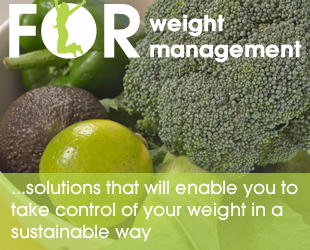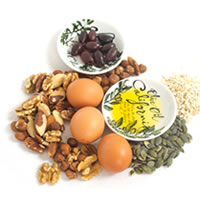- Looking for a fitter and healthier 2022?...
- SPECIAL PRICE Personal Training Taster Session - just £20 for 1 hour - More details...
- Book 6 PT sessions for £240 and save £30...Book 10 PT sessions for £350 and save £100! More on PT offers...

| ► | Overview |
| ► | Top 10 nutrition tips |
| ► | How I can work with you |
Take the next step and call me on 07711162364 or email neil@neilforsyth.co.uk.
Alternatively complete and submit the form below...
Nutrition: Top 10 Tips
You may have heard the phrase, "Abs are made in the kitchen," or heard people tell you that to achieve a reduction in body fat "It's about 80% nutrition and 20% exercise." Well, that is right! So here are my top 10 nutritional tips to help you on your way.
- Cut out or reduce foods that are high in sugar.
Some are obvious, e.g. alcohol (sadly!), chocolate, biscuits, cakes, sweets etc, but some are less obvious, e.g. bread, dried fruit, fruit juices, common breakfast cereals, soft/fizzy drinks, tinned food and most foods marked as 'low fat' which are stuffed full of sugar to replace the taste that has disappeared by removing the fat.
- Try to avoid too much bread, pasta and rice (especially 'white' versions because the goodness has been refined out; with wholemeal/brown some of the goodness remains).
These foods tend to bloat and have a high glycaemic index. A replacement for bread is rye bread (you get carbohydrate but virtually no sugar) and to replace rice try quinoa (pronounced 'keen wa')
- Eat fruit in moderation.
'Surely not' I hear you say, 'I thought fruit was good for you?' Correct, fruit has good fibre and vitamins....but it is quite high in sugar, so eat a maximum of 2 portions of fruit per day preferably either- with protein/fats (such as nuts; walnuts/almonds) or complex carbohydrates (such as porridge oats) to minimise the effect of the sugar or
- 10 minutes before sport; in that case the body drives the sugar into the muscle tissue/fibres to utilise during the exercise.
- As a guide look on the back of the product and see where it says 'Carbohydrate' and under that it will say 'of which sugars.' If that sugars number is high as a proportion of the carbohydrate then avoid it! The other problem with sugar is that you get a high and then a quick low (after the insulin lowers blood sugar by driving the sugar into the fat cells) and the low makes you feel tired and so you look for a quick 'pick me up 'which usually involves going for another sugary food, e.g. a biscuit, and so the cycle continues.
- Eat nutrient-rich foods as these keep you fuller for longer and so stops you getting the munchies. Nutrient rich foods are usually those high in protein and/or fats. Examples are eggs (the best source of complete protein), meats (particularly lean red meat, but also chicken, and turkey), tuna, salmon, shellfish, avocados and nuts (almonds/walnuts/pumpkin seeds/sunflower seeds). By contrast poor quality nutrient deficient foods are high in processed fats (the bad ones known as trans fats or hydrogenated fats) and/or sugar, e.g. cakes, biscuits, sweets, refined products such as white bread.
- And now the one that makes the jaw drop. Fat does not make you fat! Fat is an essential nutrient that has many functions in the body, not least of all the fact that it is essential to the integrity of every cell in the body and makes up most of our spinal cord and brain. Fat is the most nutrient-dense source of energy and protein (which are the building blocks of muscle tissue and repair) can only be metabolised for use by the body, if fat is present because of the fat soluble vitamins needed. By contrast poor quality nutrient deficient foods tend to be full of processed fats (the bad ones, e.g. trans fats and hydrogenated fats typically seen in margarine) and sugar. An alternative to margarine is butter or humous. Talking of protein, try to up your protein intake especially if you are exercising regularly.
- The trick is to eat the good fats, e.g. extra virgin olive oil on salads (which is high in monounsaturated fat and which lowers LDL [the bad cholesterol], avocados [monounsaturated fat], salmon and other oily fish such as sardines [omega 3 polyunsaturated fat], nuts [monounsaturated and omega 6 polyunsaturated]. Use coconut oil for cooking at high temperatures as it does not degrade. Go for full fat milk (another excellent mix of fat and protein). Why not machine blend or whisk a glass of full fat milk with a small handful of blueberries/raspberries-it is a fantastic filler and gives you a great source of vital nutrients and vitamins all in one!
- Never starve yourself or go on radical diets that deprive the body of much needed nutrients. If you do the body recognises this and initiates the starvation response which basically means it slows the metabolism and stores fat!
- Eat every 3 hours or so to keep the body's furnace burning and to avoid dropping energy levels and mood swings (which tend to lead to us eating comfort foods). Try to be never hungrier than a 3 out of 10 and never fuller than a 7 out of 10 (to avoid bloating).
- Drink plenty of water to keep hydrated and concentration levels high (and, yes it pains me to say it again, keep alcohol to a minimum as the sugar in wine and beer is sky high-sorry!)
Take the next step and call me on 07711162364 or email neil@neilforsyth.co.uk. Alternatively submit the online form on the left. All enquiries and discussions are completely confidential and I will not share any information with any third parties without your written consent.
![]()



